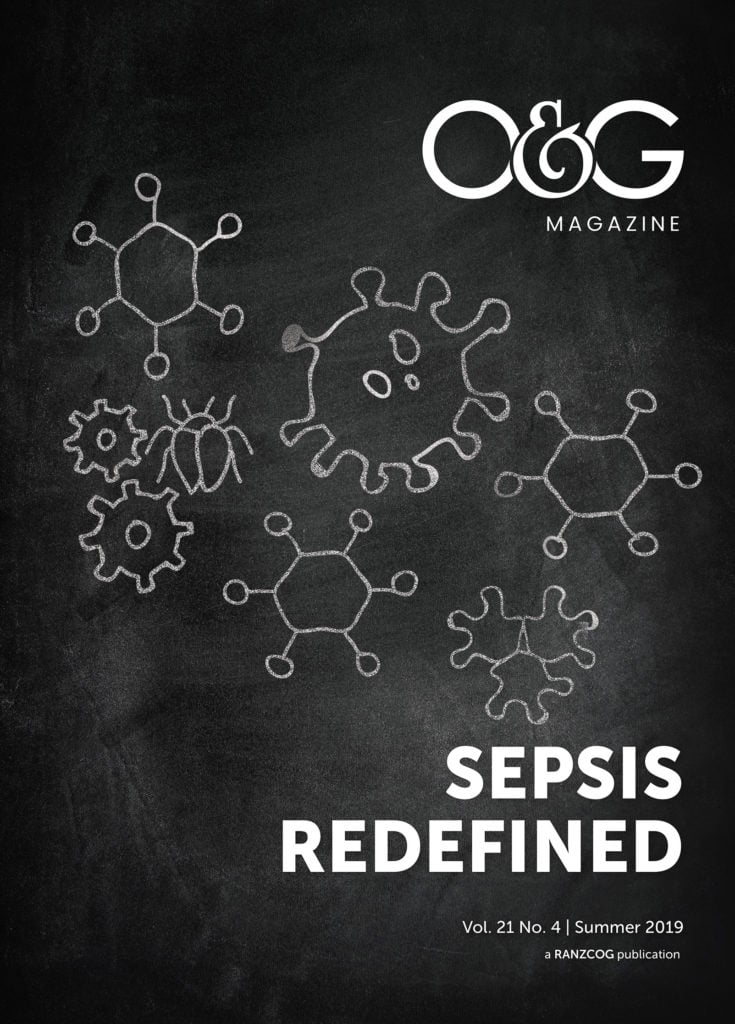Maternal sepsis is a life-threatening condition defined by the World Health Organization (WHO) as ‘organ dysfunction resulting from infection during pregnancy, childbirth, post-abortion, or in the postpartum period’.1It is a leading cause of maternal death, attributing an estimated 33 330 (11 per cent) deaths globally each year.2 Neonatal sepsis, defined as sepsis within the first 28 days of life, is a leading cause of newborn death, with an estimated 3 million cases each year, resulting in 180 000 (6.8 per cent) deaths.3 4 In low- and middle-income countries (LMICs), babies born to mothers with laboratory-proven bacterial infection have a seven-fold increased risk of developing neonatal sepsis.5 As such, implementing strategies to prevent maternal sepsis will also save newborn lives, especially in settings with high neonatal mortality and where sepsis accounts for a greater proportion of deaths.
Limitations of current data
The true burden of sepsis in LMICs remains understudied with an absence of robust data to quantify burden or to guide effective treatment strategies. Current global estimates and treatment strategies have been largely extrapolated from data generated in high-income countries.6 In the 2015 Global Burden of Disease statistics, sepsis was considered a ‘garbage code’ with deaths attributed to the underlying source of infections rather than as a result of sepsis, making it impossible to determine accurate estimates.7
Similarly, over the past half-century there has been minimal improvement in the availability and completeness of vital registration data (births, deaths, marriages) and comprehensive routine health information systems at global and national levels are lacking. An estimated one-third of births and a higher number of maternal deaths are unregistered or misclassified with scant data on maternal and newborn morbidity.8
The importance of prevention
Strengthening the quality of maternal and newborn care in LMICs is vital to preventing maternal and neonatal sepsis. Improvements to infection prevention and control (IPC) and water, sanitation and hygiene (WASH) measures, such as ensuring access to safe water, hand washing, clean delivery areas, preventing overcrowding in maternity units, promoting evidence-based care of the umbilical cord and kangaroo care for small and/or preterm babies, greatly reduce the risk of infection.9 10 Despite the importance of simple IPC and WASH measures in preventing infection, a study of 66 101 healthcare facilities from 54 LMICs reported 38 per cent of facilities did not have access to safe water, 19 per cent did not have adequate sanitation and 35 per cent did not have access to water and soap for handwashing.11
While antibiotics undoubtedly save lives, in many resource-limited settings they are unavailable, overused or substandard, resulting in inadequate treatment and exacerbating adverse effects and antimicrobial resistance (AMR).12 With virtually no routinely collected data on AMR in maternity units globally, the risks of using prophylactic antibiotics for women during childbirth should be carefully balanced against potential benefits and restricted to situations where there is evidence of benefit.13 Current WHO guidelines include recommendations for the rational use of antibiotics around the time of birth (Table 1). However, the evidence supporting these recommendations is mostly of low, or very low quality.14 The recent ‘Prophylactic antibiotics in the prevention of infection after operative vaginal delivery’ (ANODE) multicentre randomised controlled trial reported an 8 per cent reduction in confirmed or suspected infection for UK women assigned to treatment with prophylactic amoxicillin and clavulanic acid or placebo, prompting calls for updates to WHO guidance.15 However, whether these findings are generalisable to LMIC settings is unclear, and given the vastly different characteristics of sepsis in resource-limited settings (including common pathogens, at-risk populations and clinical conditions), we, and many others, continue to acknowledge that interventions effective in high-income settings may not always be effective in LMICs, and may even cause harm.16,17
| Quality of evidence | Strength of recommendation | |
| Prophylactic antibiotics are recommended: | ||
| Intrapartum for women with Group B Streptococcus (GBS) colonisation | Very low | Conditional |
| Preterm prelabour rupture of membranes | Moderate | Strong |
| Manual removal of the placenta | Very low | Strong |
| Third- or fourth-degree perineal tear | Very low | Strong |
| Elective or emergency caesarean section | Moderate | Strong |
| For caesarean section, prophylactic antibiotics should be given prior to skin incision | Moderate | Strong |
| For caesarean section, a single dose of first-generation cephalosporin or penicillin should be used | Very low | Conditional |
| Prophylactic antibiotics are NOT recommended: | ||
| During the second or third trimester for all women with the aim of reducing infectious morbidity | Very low | Strong |
| Preterm labour with intact amniotic membranes | Moderate | Strong |
| Prelabour rupture of membranes at (or near) term | Low | Strong |
| Meconium-stained amniotic fluid | Very low | Conditional |
| Operative vaginal birth | Concensus | Strong |
| Episiotomy | Very low | Strong |
| Uncomplicated vaginal birth | Very low | Strong |
Improvements in IPC and rational use of antibiotic prophylaxis during labour and delivery may reduce maternal deaths from sepsis; however, this strategy will not be sufficient to eliminate preventable newborn deaths. Newborns are susceptible to other sources of infection, and babies born preterm, growth restricted or both, are particularly vulnerable. All too frequently, sick newborns are admitted to neonatal units that expose them to hospital-acquired infections that can be extremely challenging to manage. The Delhi National Infection Study examined rates of sepsis and AMR in 13 530 neonates admitted to neonatal units in India, demonstrating alarmingly high levels of AMR in the most common organisms isolated, with 38 per cent of E. coli demonstrating multidrug resistance, and up to 82 per cent in Acinetobacter spp.18 19 This burden of difficult-to-treat newborn infections, combined with a lack of evidence-based strategies for the management of multidrug resistant infections in mothers and babies, has prompted calls for greater emphasis on prevention and antimicrobial stewardship awareness.
Screening, early detection and treatment
Accurate, timely diagnosis and treatment of maternal and neonatal sepsis are essential to optimise patient outcomes; however, detection remains challenging, particularly in resource-limited settings.
For women, a number of physiological changes may mask the early signs of sepsis during pregnancy and birth. The Society of Obstetric Medicine of Australia and New Zealand developed the obstetrically modified quick Sepsis-related Organ Failure (omqSOFA) screening criteria which include: respiratory rate of 25 or more breaths per minute, any non-alert mental state and systolic blood pressure lower than 90 mmHg. A score of 1 is allocated for each present symptom, with a score of 2 or more having predictive validity for women at increased risk of hospital mortality.20 The global maternal sepsis study (GLOSS) investigators are developing and validating identification criteria for severe maternal infection and sepsis with the aim of developing a core set of practices for prevention, early detection and management.21 The results of this study have not yet been published. The Surviving Sepsis Campaign (SSC) Guidelines recommend the administration of empirical antimicrobial therapy within one hour of suspected sepsis, with observational studies supporting adherence to the SSC guidelines in improving survival;22 however, implementation of guidelines in LMICs will be challenging. A survey of 185 African hospitals reported that only 1.5 per cent of hospitals surveyed had implemented SSC guidelines, with shortages in facilities, equipment, drugs and disposable materials a barrier to implementation.23
Diagnosing sepsis in neonates remains difficult. There is no internationally agreed definition, and the lack of system-specific signs can lead to high rates of antibiotic treatment for a clinical ‘suspicion’ of sepsis alone. Tuzun et al have called for ‘a predictive (neonatal) sepsis definition and rapid bedside point-of-care tests.’24 Australian researchers at the Burnet Institute are currently undertaking a project to develop a point-of-care test for neonatal sepsis specifically for use in resource-limited settings.25
The challenge of remote and fragile settings
In remote and fragile settings, access to healthcare is limited by the physical environment and the availability of skilled healthcare workers and resources. Access by air or foot may be the only options in remote settings, while in fragile settings, health systems are often weak or absent. Around 50 per cent of all internally displaced persons are women and children (under 18 years of age) and an estimated 60 per cent of maternal deaths and 45 per cent of neonatal deaths occur in humanitarian settings.26 Addressing the root causes of fragility and improving capacity to provide accessible, affordable and innovative healthcare services to people in remote and fragile settings is an urgent priority.
The ‘three delays’ framework
While there is no universal approach to reducing the burden of maternal and neonatal sepsis, the ‘three delays’ framework provides a model for healthcare workers to plan targeted interventions in resource-limited settings and has been validated across numerous WHO regions. For maternal deaths, the model proposes that mortality is predominantly due to delays in: patient recognition of an obstetric emergency (type 1 delay); reaching an appropriate obstetric facility (type 2 delay), and; receiving appropriate and adequate care when a facility is reached (type 3 delay).27 This model has recently been adapted for sepsis, proposing three major areas of delay: sepsis recognition and diagnosis at the time of triage (type 1 delay); initial focused resuscitation (type 2 delay), and; ongoing clinical monitoring and re-evaluation (type 3 delay).28 A combination of these models targeting maternal and neonatal sepsis in resource-limited settings may be a promising solution, but, to our knowledge, is yet to be developed or tested.
Conclusion
Maternal and neonatal sepsis are preventable conditions that contribute a large proportion of global mortality and morbidity, particularly in resource-limited settings. The true burden of disease in LMICs is likely to be vastly underappreciated, representing an urgent need to improve classification of disease and strengthen vital registration. Prevention initiatives should emphasise the importance of improving basic IPC and WASH prevention measures, ensuring the availability of safe and appropriate antibiotics while simultaneously balancing the emerging threat of AMR. Importantly, initiatives proven effective in high-income settings should be cautiously considered in the context of the vastly different characteristics of sepsis in LMICs, where there is an urgent need for locally driven and contextually relevant research and innovation.
References
- World Health Organization. Statement on Maternal Sepsis. 2017. Available from: www.who.int/reproductivehealth/publications/maternal_perinatal_health/maternalsepsis-statement/en/.
- Frankling CC, Finfer S, Lissauer D, et al. The dark ages of maternal sepsis: time to be enlightened. Br J Anaesth. 2018;120(4):626-8.
- Fleischmann-Struzek C, Goldfarb DM, Schlattmann P, et al. The global burden of paediatric and neonatal sepsis: a systematic review. Lancet Respir Med. 2018;6(3):223-30.
- Liu L, Oza S, Hogan D, et al. Global, regional, and national causes of under-5 mortality in 2000-15: an updated systematic analysis with implications for the Sustainable Development Goals. Lancet. 2016;388(10063):3027-35.
- Chan GJ, Baqui AH, Modak JK, et al. Early-onset neonatal sepsis in Dhaka, Bangladesh: risk associated with maternal bacterial colonisation and chorioamnionitis. Trop Med Int Health. 2013;18(9):1057-64.
- Rudd KE, Kissoon N, Limmathurotsakul D, et al. The global burden of sepsis: barriers and potential solutions. Crit Care. 2018;22(1):232.
- Finfer S, Machado FR. The Global Epidemiology of Sepsis. Does It Matter That We Know So Little? Am J Respir Crit Care Med. 2016;193(3):228-30.
- World Bank Group. Global Civil Registration and Vital Statistics: Scaling up Investment Plan 2015–2024. 2014. Available from: www.worldbank.org/en/topic/health/publication/global-civil-registration-vital-statistics-scaling-up-investment.
- World Health Organization. SURVIVE and THRIVE: Transforming care for every small and sick newborn. 2019. Available from: www.who.int/maternal_child_adolescent/documents/care-small-sick-newborns-survive-thrive/en/.
- World Health Organization. WHO recommendations for prevention and treatment of maternal peripartum infections. 2015. Available from: www.who.int/reproductivehealth/publications/maternal_perinatal_health/peripartum-infections-guidelines/en/.
- World Health Organization. Water, sanitation and hygiene in health care facilities: Status in low- and middle-income countries and way forward. 2015. Available from: www.who.int/water_sanitation_health/publications/wash-health-care-facilities/en/.
- Rudd KE, Kissoon N, Limmathurotsakul D, et al. The global burden of sepsis: barriers and potential solutions. Crit Care. 2018;22(1):232.
- Graham WJ, Morrison E, Dancer S, et al. What are the threats from antimicrobial resistance for maternity units in low- and middle-income countries? Glob Health Action. 2016; doi: 10.3402/gha.v9.33381.
- World Health Organization. WHO recommendations for prevention and treatment of maternal peripartum infections. 2015. Available from: www.who.int/reproductivehealth/publications/maternal_perinatal_health/peripartum-infections-guidelines/en/.
- Knight M, Chiocchia V, Partlett C, et al. Prophylactic antibiotics in the prevention of infection after operative vaginal delivery (ANODE): a multicentre randomised controlled trial. Lancet. 2019;393(10189):2395-403.
- Rudd KE, Kissoon N, Limmathurotsakul D, et al. The global burden of sepsis: barriers and potential solutions. Crit Care. 2018;22(1):232.
- Thompson KJ, Hirst, J E. Prophylactic antibiotics after operative vaginal delivery. Lancet. 2019; doi: 10.1016/S0140-6736(19)30773-1.
- Mathur S, Li G, Folgori L, et al. DeNIS collaboration: setting the future research agenda. Lancet Glob Health. 2017;5(1):e36.
- Investigators of the Delhi Neonatal Infection Study. Characterisation and antimicrobial resistance of sepsis pathogens in neonates born in tertiary care centres in Delhi, India: a cohort study. Lancet Glob Health. 2016;4(10):e752-60.
- Bowyer L, Robinson HL, Barrett H, et al. SOMANZ guidelines for the investigation and management sepsis in pregnancy. ANZJOG. 2017;57(5):540-51.
- Bonet M, Souza JP, Abalos E, et al. The global maternal sepsis study and awareness campaign (GLOSS): study protocol. Reprod Health. 2018;15(1):16.
- Rhodes A, Evans LE, Alhazzani W, et al. Surviving Sepsis Campaign: International Guidelines for Management of Sepsis and Septic Shock 2016. Critical Care Medicine. 2017;45(3):486-552.
- Baelani I, Jochberger S, Laimer T, et al. Availability of critical care resources to treat patients with severe sepsis or septic shock in Africa: a self-reported, continent-wide survey of anaesthesia providers. Crit Care. 2011;15(1):R10.
- Tuzun F, Ozkan H, Cetinkaya M, et al. Is European Medicines Agency (EMA) sepsis criteria accurate for neonatal sepsis diagnosis or do we need new criteria? PLoS One. 2019;14(6):e0218002.
- The Burnet Institute. Development of a point-of-care test for neonatal sepsis. 2019. Available from: www.burnet.edu.au/projects/267_development_of_a_point_of_care_test_for_neonatal_sepsis_to_improve_diagnosis_and_treatment_of_newborn_infections.
- WHO: Every Woman Every Child. The Global Strategy for Women’s, Children’s and Adolescents’ Health (2016–2030). 2015. Available from: https://globalstrategy.everywomaneverychild.org/.
- Barnes-Josiah D, Myntti C, Augustin A. The “three delays” as a framework for examining maternal mortality in Haiti. Soc Sci Med. 1998;46(8):981-93.
- Papali A, McCurdy MT, Calvello EJ. A “three delays” model for severe sepsis in resource-limited countries. J Crit Care. 2015;30(4):861 e9-14.








Leave a Reply